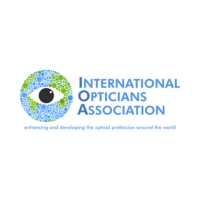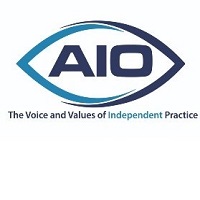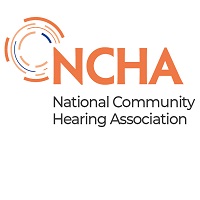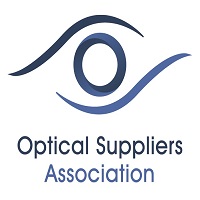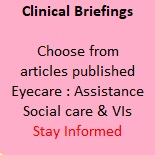Industry Sector
OSA publishes the MHRA Consultation on Medical Devices
OSA publishes the MHRA Consultation on Medical Devices
MHRA have published their consultation response on the future of medical device regulation in the UK.
Ann Blackmore who has been advising the OSA on the MHRA future introduction of UK regulations following Brexit. She summarises some of the key conclusions from the government response to the consultation and the next steps.
Many OSA members should note the information on transitional arrangements, which it would seem plan to allow devices with a CE mark based on the EU MDR to continue to be placed on the market for 5 years from 1 July 2023, and those with a CE mark under the old EU MDD, or the UKCA mark (awarded before the new regulations) for three years. Many industry and retail and practice importers will also be assisted by this information.
The next meeting of the MHRA Trades Association group is Thursday 7 July.
But for now here is the most up to date reporting:
The MHRA will begin a series of focus groups in July with stakeholders to discuss specific aspects of the regulations and guidance, which the OSA will attend. As and when we have details of the focus groups we will update OSA members and seek your input.
You can read the government’s press release and the Government response here.
Summary of key points:
- Respondents to the consultation have made clear that they want UK regulations to align closely with other international regulatory systems, and in particular the EU Medical Devices Regulations 2017.
- The minimum content of a Declaration of Conformity will be set out in the regulations in order to facilitate a more consistent approach and remove ambiguity.
- The government intends to introduce a requirement for manufacturers to have measures in place (for example, sufficient financial coverage) for providing recompense to those impacted by adverse incidents with medical devices on the UK market. However, the intention is that requirements will be commensurate with the type of device, risk class and size of company.
- The government intends to require all medical device manufacturers, including manufacturers of Class I devices, to apply an appropriate Quality Management System, proportionate to the risk class of the medical device. The MHRA will provide further guidance on QMS requirements indue course.
- The regulations will include an explicit requirement for the UK Responsible Person to have an address in the UK at which they are physically located. The government intends to proceed with the proposal to clarify that the UKRP is legally liable (responsible or answerable in law) for defective medical devices on the same basis as the manufacturer, subject to further consideration on how this would operate in practice. It will also include a requirement for manufacturers and UKRPs to draw up a legal contract, subject to further consideration on how this would operate in practice.
- The government will proceed with the proposal to require that manufacturers have available within their organisation at least one Qualified Person with qualifications or regulatory experience that exceeds minimum standards that would be set out in the UK medical devices regulations in the field of medical devices. They will clarify in guidance, the requirements that will apply to Qualified Persons. SMEs will be required to have a Qualified Person permanently and continuously at their disposal. They will provide further guidance on this requirement.
- On registration, the GMDN system will be used for nomenclature. A new registration system will be developed and all classes of devices will be registered, however, the government intends to provide a phased introduction of new registration requirements, commensurate with the risk classification of a device. This will be similar to the phased approach taken to introducing new medical device registration requirements during 2021, where compliance timeframes were set in accordance with device classes.
- A system of UDI will be introduced and manufacturers will be required to keep an up-to-date list of all UDIs they have assigned to medical devices as part of their technical documentation, but the government will consider further whether there are valid exemptions to UDI requirements and whether there is a need for further guidance on how UDI requirements apply to certain product groups.
- Software as a Medical Device (SaMD) – The government will proceed with the proposal to amend the classification rules to include the IMDRF SaMD classification rule for general medical devices (with supporting definitions and implementing rules). The government plans to add the following definition of ‘Software’ to the UK medical devices regulations: “A set of instructions that processes input data and creates output data”.
- On environmental issues, the government plans to introduce a requirement that devices must be designed and manufactured in a way that reduces, as far as possible, the risks posed to public health by substances or particles that may be released from the device including wear debris, degradation of products and processing residues. It will also broaden the circumstances in which electronic (rather than paper) labels and instructions for use can be used for medical devices. At this stage they do not plan further environmental regulatory requirements, but this will be kept under review. They will consider publishing guidance on best practice covering this topic to support alignment with government Net Zero Ambitions.
- The Government proposes transitional arrangements that will allow, as a minimum:
- UKCA marked general medical devices that hold a valid certification/declaration of conformity to the UKCA standard, before the new regime takes full effect, to be placed on the market until either the certificate expires or for three years after the new regulations take effect.
- General medical devices that hold a valid certification/declaration of conformity to the CE standard, issued under the EU Medical Devices Regulation to continue to be placed on the market until either the certificate expires or for five years after the new regulations take effect, whichever is sooner. This will apply even if the certification/declaration of conformity is dated after the new regulations take effect. It also proposes to review this provision at the end of the five-year period.
General medical devices that hold a valid certification/declaration of conformity to the CE standard, issued under the EU Medical Devices Directive before the regulations take effect, to be placed on the market until either the certificate expires or for three years (for general medical devices) after the new regulations take effect, whichever is sooner








